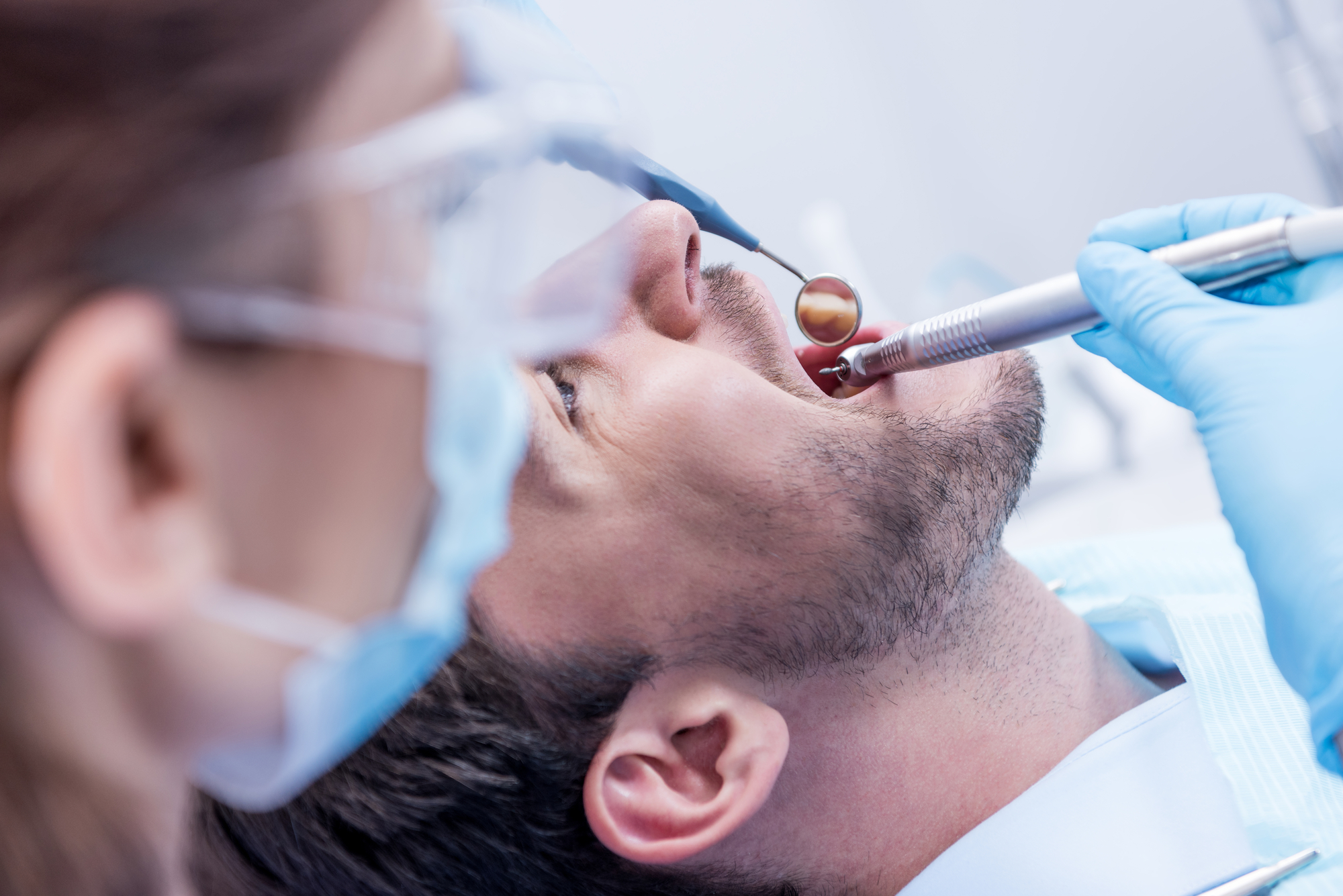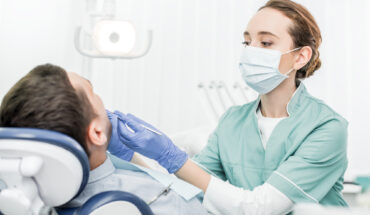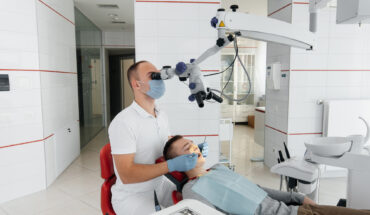
Welcome to our latest blog post where we will be discussing oral cavity and oropharyngeal cancers, two types of cancer that affect the mouth, throat, and surrounding areas. These types of cancer can have a significant impact on your overall health and wellbeing, which is why it’s important to understand what they are, their symptoms, risk factors and treatment options. In this article, we’ll explore these topics in detail while also providing tips for oral hygiene and dental implants as preventative measures. So grab a cup of coffee and let’s dive into the world of oral cavity and oropharyngeal cancers!
What is Oral Cavity Cancer?
Oral cavity cancer is a type of cancer that affects the tissues in the mouth, including the lips, gums, tongue, and roof or floor of the mouth. It occurs when cells in these areas start to grow uncontrollably and form tumors.
The most common symptom of oral cavity cancer is a sore or lump that doesn’t go away after a few weeks. Other symptoms include difficulty swallowing or speaking, ear pain, loose teeth or dentures that no longer fit properly.
There are several risk factors associated with oral cavity cancer such as tobacco use (including smoking cigarettes and using smokeless tobacco), heavy alcohol consumption, poor diet lacking fruits and vegetables which contain antioxidants along with exposure to HPV virus.
Diagnosis for oral cavity cancers includes physical exams by your dentist along with biopsy tests to determine if there is presence abnormal tissue growth around your mouth area.
In case you’re diagnosed with this condition then treatment options would involve removing any noticeable tumor(s) through surgery followed by radiation therapy in order to prevent relapse.
What is Oropharyngeal Cancer?
Oropharyngeal cancer is a type of head and neck cancer that affects the back of the throat, tonsils, and base of the tongue. It can also include other areas such as the pharynx, which connects your nose to your esophagus.
The most common cause of oropharyngeal cancer is HPV infection. Other risk factors include smoking tobacco and heavy alcohol consumption. It’s important to note that not everyone with these risk factors will develop oropharyngeal cancer.
Symptoms may include difficulty swallowing, ear pain, sore throat, changes in voice quality or tone, persistent coughing and weight loss. If you are experiencing any of these symptoms for an extended period it’s advisable to consult your doctor.
Diagnosis typically includes a physical exam along with imaging tests like CT scans or MRIs as well as biopsies taken during endoscopies.
Treatment options for oropharyngeal cancers depend on multiple variables including size and location of tumors; however various treatments may be used including surgery radiation therapy chemotherapy targeted therapy etcetera depending on individual needs.
Maintaining good oral hygiene practices such as brushing teeth regularly flossing daily using mouthwash & avoiding tobacco use can help reduce likelihood overall incidence rates but regular check-ups by dental professionals are still recommended
Risk Factors for Oral Cavity and Oropharyngeal Cancers
Many factors can increase the risk of developing oral cavity and oropharyngeal cancers. Tobacco use, including smoking cigarettes, cigars, or pipes and chewing tobacco, is the leading cause of these types of cancer. Excessive alcohol consumption also increases the risk.
Another significant factor in developing oral cavity and oropharyngeal cancers is HPV (human papillomavirus) infection. This common sexually transmitted infection has been linked to an increased risk of certain head and neck cancers such as those that develop in the tonsils and base of the tongue.
Poor oral hygiene may also play a role in increasing the risk for these types of cancer. Regular brushing, flossing, and dental check-ups are essential for maintaining good oral health.
Other potential risk factors include exposure to radiation therapy to the head or neck area; a weakened immune system due to conditions like HIV/AIDS; poor nutrition; certain environmental exposures such as wood dust or fumes from paint products; and genetic predisposition.
It’s important to note that having one or more risk factors does not mean someone will necessarily develop oral cavity or oropharyngeal cancer. However, understanding these risks can help individuals make informed choices about their lifestyle habits and seek appropriate medical care if necessary.
Symptoms of Oral Cavity and Oropharyngeal Cancers
Oral cavity and oropharyngeal cancers can be difficult to detect in their early stages as they often present with no symptoms. However, there are some signs and symptoms that you should look out for:
1. Mouth sores that do not heal within two weeks.
2. Persistent pain in the mouth.
3. A lump or thickening in the cheek.
4. Difficulty swallowing or moving the tongue.
5. White or red patches on the gums, tongue, tonsils, or lining of the mouth.
It is important to note that these symptoms may also be caused by other conditions such as infections, trauma or benign tumors; therefore it is crucial to seek prompt medical attention if you experience any of these signs.
Additionally, there are some less common but more concerning symptoms including ear pain, difficulty breathing and persistent hoarseness which require urgent evaluation by a healthcare professional.
Regular dental check-ups and good oral hygiene habits can help identify abnormalities early on and prevent progression of disease to advanced stages where treatment options become limited.
Diagnosis of Oral Cavity and Oropharyngeal Cancers
The diagnosis of oral cavity and oropharyngeal cancers begins with a physical exam by your doctor, which includes examining your mouth, throat, and neck. Your doctor may also order imaging tests such as CT scans or MRIs to further examine the affected areas.
If there are any suspicious growths or lesions found during the physical exam or through imaging tests, a biopsy will be performed to determine if cancer cells are present. A tissue sample is taken from the affected area and examined under a microscope by a pathologist.
In some cases, additional testing may be necessary to determine the extent and stage of the cancer. This can include blood tests to check for tumor markers, PET scans to detect any spread of cancer beyond the primary site, and endoscopy exams to examine internal organs.
It’s important for individuals who notice any unusual symptoms in their oral cavity or pharynx region to seek medical attention promptly. Early detection is key in improving treatment outcomes for oral cavity and oropharyngeal cancers.
Treatment of Oral Cavity and Oropharyngeal Cancers
The treatment options for oral cavity and oropharyngeal cancers depend on various factors, such as the stage of cancer, location, size and overall health of an individual. The primary treatment options include surgery, reconstruction can involve dental implants, radiation therapy, chemotherapy or a combination of these treatments.
Surgery is generally recommended when the tumor is small in size and has not spread to other parts of the body. During this procedure, the surgeon removes the entire cancerous tissue along with some healthy tissues surrounding it.
Radiation therapy uses high-energy beams to kill cancer cells. It is often used after surgery to destroy any remaining cancer cells that may have been left behind.
Chemotherapy involves using drugs to kill cancer cells. This approach is typically recommended when the tumor has already spread beyond its original site or if there are multiple tumors in different locations.
In some cases, a combination of two or more treatments may be used for better results. For instance, radiation therapy can be combined with chemotherapy for advanced-stage cancers.
It’s essential to note that treatment can cause side effects such as hair loss, nausea and fatigue which can affect one’s quality of life during recovery from these cancers. Therefore it’s important for individuals undergoing treatment to maintain good oral hygiene practices like brushing their teeth regularly even if they experience mouth sores caused by chemo-radiotherapy because dental implants may become necessary after recovering from oral cavity cancers especially if tooth/teeth extraction was done as part of treatment.
Prevention of Oral Cavity and Oropharyngeal C
Taking preventive measures is the best way to avoid oral cavity and oropharyngeal cancers. It’s essential to maintain good oral hygiene, which includes brushing teeth twice a day with fluoride toothpaste, flossing daily, and using mouthwash. Which is why teaching kids about the need for good oral hygiene is very important.
Avoiding tobacco products such as cigarettes and chewing tobacco can significantly reduce your risk of developing these types of cancer. Limiting alcohol consumption and eating a healthy diet rich in fruits and vegetables can also help lower your chances of getting oral cancer.
Regular dental check-ups are crucial for early detection, so make sure you visit your dentist every six months. If you notice any unusual changes like persistent pain or soreness in the mouth or throat, difficulty swallowing or speaking, lumps on the tongue, gums or neck area – it’s important to see a doctor immediately.
In summary, taking care of your oral health is key to preventing both oral cavity and oropharyngeal cancers. By adopting healthy habits such as maintaining proper dental hygiene practices combined with regular visits to the dentist for checkups will ensure that if there are any concerns they will be detected early enough for effective treatment options. Remember that prevention is always better than cure!




